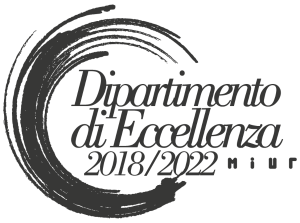Enhancing Socio-pragmatic Competence through Storytelling
Exploring Discourse Markers in ESL College Learners’ Oral Narratives
DOI:
https://doi.org/10.13136/2281-4582/2025.i25.1587Keywords:
Acquisition of English as a second language, Oral narratives, Socio-pragmatic competence, Discourse markers, Learner corpus analysis, ESL college learnersAbstract
This study, addressing gaps highlighted by Lucarevschi (2016), investigates learners’ oral narratives and the role of discourse markers (DMs) in enhancing grammatical and socio-pragmatic competence in English as a Second Language (ESL). The research analyses a corpus of 36 narratives produced by upper-intermediate college learners. Participants were asked to narrate a weird event that happened to them. Then they were instructed on traits of spoken English (DMs included) and the phases of oral narratives (Labov and Waletzky 1967). Lastly, they were asked to re-narrate their stories. A mixed-methods analysis of DM occurrences was used, employing González’s (2004) taxonomy. Results show a statistically significant increase in the use of specific DMs after instruction (so, you know) and a gradual acquisition of informal conversational features. Comparison with native speakers’ narratives (González 2004) reveals learners’ alignment in DM range and pragmatic functions but differences in overall frequency and use, as the overreliance on so and and seem to suggest.
The findings challenge the perception of DMs as language elements which do not need to be taught and advocate for their explicit inclusion in higher education ESL instruction to enhance coherence and socio-pragmatic competence. Limitations are acknowledged, especially in the monologic focus used. Further research on DM use in ESL conversational narrative contexts is suggested.
References
AbManan, Nor Ashikin and Nor Nadia Raslee. “Describing the Use of Discourse Markers by ESL Learners in Writing.” International Journal of Advanced and Applied Sciences 4.3 (2017): 101-106.
Alghamdi, Emad A. “Discourse Markers in ESL Personal Narrative and Argumentative Papers: A Qualitative and Quantitative Analysis.” International Journal of Humanities and Social Science 4.4 (2014): 294-305.
Allami, Hamid and Mohsen Ramezanian. “An Analysis of EFL Narrative Structure and Foreign Language Proficiency.” Journal of English Language Teaching and Learning 11.24 (2019): 29-53.
Andersen, Gisle. Pragmatic Markers and Sociolinguistic Variation: A Relevance-Theoretic Approach to the Language of Adolescents. Amsterdam: John Benjamins, 2001.
Bardovi-Harlig, Kathleen. “A Narrative Perspective on the Development of the Tense/Aspect System in Second Language Acquisition.” Studies in Second Language Acquisition 17.2 (1995): 263-291.
Beeching, Kate. Pragmatic Markers in British English: Meaning in Social Interaction. Cambridge: Cambridge University Press, 2016.
Biber, Douglas, et al. Longman Grammar of Spoken and Written English. Essex: Pearson Education Limited, 1999.
Blanchard, Meaghan and Lieven Buysse. “Like in Discourse Marker Combinations in Spoken Interaction.” Corpus Pragmatics 5 (2021): 463-485.
Blyth, Carl, Sigrid Recktenwald and Jenny Wang. “I’m Like, Say What?! A New Quotative in American Oral Narrative.” American Speech 65.3 (1990): 215-227.
Buysse, Lieven. “So as a Multifunctional Discourse Marker in Native and Learner Speech.” Journal of Pragmatics 44.13 (2012): 1764-1782.
Buysse, Lieven. “The Pragmatic Marker You Know in Learner Englishes.” Journal of Pragmatics 121 (2017): 40-57.
Carranza, Isolda E. “Low-Narrativity Narratives and Argumentation.” Narrative Inquiry 8.2 (1998): 287-317.
Carter, Ronald and Michael McCarthy. Cambridge Grammar of English. Cambridge: Cambridge University Press, 2006.
---. Exploring Spoken English. Cambridge: Cambridge University Press, 1997.
Cary, Stephen. The Effectiveness of a Contextualized Storytelling Approach for Second Language Acquisition. Unpublished doctoral dissertation, University of San Francisco, 1998.
Cuenca, Maria Josep. “The Fuzzy Boundaries Between Discourse Marking and Modal Marking.” Discourse Markers and Modal Particles: Categorization and Description. Edited by Liesbeth Degand, Bert Cornillie and Paola Pietrandrea. Amsterdam: John Benjamins, 2013. 191-216.
D’Arcy, Alexandra. “Like and Language Ideology: Disentangling Fact from Fiction.” American Speech 82.4 (2007): 386-419.
Di Ferrante, Laura. “Transitioning between Small Talk and Work Talk through Discourse Markers: Evidence from a Workplace Spoken Corpus.” Brno Studies in English 47.2 (2021): 7-30.
Fischer, Kerstin, edited by. Approaches to Discourse Particles. Amsterdam: Elsevier, 2006.
Fraser, Bruce. “Topic Orientation Markers.” Journal of Pragmatics 41.5 (2009): 892-898.
---. “What Are Discourse Markers?” Journal of Pragmatics 31 (1999): 931-952.
Freeman, Mark. “Narrative as a Mode of Understanding: Method, Theory, Praxis.” The Handbook of Narrative Analysis. Edited by Anna De Fina and Alexandra Georgakopoulou. Hoboken: Wiley-Blackwell, 2015. 21-37.
Gatti, Maria Cristina and Jeanette Hoffmann. Storytelling as a Cultural Practice: Pedagogical and Linguistic Perspectives. Lausanne: Peter Lang Verlag, 2024.
Georgakopoulou, Alexandra. Small Stories, Interaction and Identities. Amsterdam: John Benjamins, 2007.
---. “Thinking Big with Small Stories in Narrative and Identity Analysis.” Narrative Inquiry 16.1 (2006): 122-130.
Ghafar, Zanyar Nathir. “Storytelling as an Educational Tool to Improve Language Acquisition: A Review of the Literature.” Journal of Digital Learning and Distance Education 2.9 (2024): 781-790.
González, Montserrat. Pragmatic Markers in Oral Narrative: The Case of English and Catalan. Amsterdam: John Benjamins, 2004.
Guoying, Yuan and Xiaolin Zhang. “A Review of the Use of Storytelling to Improve Students’ Oral Proficiency in EFL Teaching.” European Journal of English Language Teaching 5.1 (2019): 44-62.
Halliday, Michael A. K. and Ruqaiya Hasan. Language, Context and Text: Aspects of Language in a Social-Semiotic Perspective. Melbourne: Deakin University Press, 1985.
Hellermann, John and Amy Vergun. “Language Which Is Not Taught: The Discourse Marker Use of Beginning Adult Learners of English.” Journal of Pragmatics 39.1 (2007): 157-179.
Holmes, Janet. “Workplace Narratives, Professional Identity and Relational Practice.” Discourse and Identity. Edited by Anna De Fina, Deborah Schiffrin and Michael Bamberg, Cambridge: Cambridge University Press, 2006. 166-187.
House, Juliane. “The Pragmatics of English as a Lingua Franca.” Applied Pragmatics 4.2 (2022): 121-136.
Hsu, Yi. The Influence of English Storytelling on the Oral Language Complexity of EFL Primary Students. Unpublished Master’s Degree Thesis, National Yunlin University of Science & Technology, 2010.
Huang, Lan-fen, Yen-liang Lin and Tomas Graf. “Development of the Use of Discourse Markers across Different Fluency Levels of CEFR A Learner Corpus Analysis.” Pragmatics: Quarterly Publication of the International Pragmatics Association 33.1 (2023): 49-77.
Iglesias Moreno, Ángela E. “Native Speaker-Non-Native Speaker Interaction: The Use of Discourse Markers.” ELIA: Estudios de Lingüística Inglesa Aplicada 2 (2017): 129-144.
Jakupčević, Eva. “Young Language Learners’ Use of Discourse Markers in L2 Narratives.” English Teaching and Learning 43 (2019): 411-428.
Jucker, Andreas H. and Sara W. Smith. “And People Just You Know Like ‘Wow’: Discourse Markers as Negotiating Strategies.” Discourse Markers: Descriptions and Theory. Edited by Andreas H. Jucker and Yael Ziv. Amsterdam: John Benjamins, 1998. 171-201.
Kang, Jennifer Yusun. “On the Ability to Tell Good Stories in Another Language: Analysis of Korean EFL Learners’ Oral ‘Frog Story’ Narratives.” Narrative Inquiry 13.1 (2003): 127-149.
---. “Producing Culturally Appropriate Narratives in English as a Foreign Language: A Discourse Analysis of Korean EFL Learners’ Written Narratives.” Narrative Inquiry 16.2 (2006): 379-407.
Kilgarriff, Adam, et al. “The Sketch Engine: Ten Years On.” Lexicography 1 (2014): 7-36.
Labov, William. “The Transformation of Experience in Narrative Syntax.” Language in the Inner City. Edited by William Labov. Philadelphia: University of Pennsylvania Press, 1972. 354-396.
Labov, William and Joshua Waletzky. “Narrative Analysis.” Essays on the Verbal and Visual Arts. Edited by June Helm. Seattle: University of Washington Press, 1967. 12-44.
Lee, Miranda. “Discourse Structure and Rhetoric of English Narratives: Differences between Native English and Chinese Non-Native English Writers.” Text & Talk 23.3 (2003): 347-368.
Li, Chen-Ying and Paul Seedhouse. “Classroom Interaction in Story-Based Lessons with Young Learners.” The Asian EFL Journal Quarterly 12.2 (2010): 288-312.
Lin, Yen-Liang. “Discourse Marking in Spoken Intercultural Communication between British and Taiwanese Adolescent Learners”. Pragmatics 26.2 (2016): 221-245.
Lucarevschi, Claudio Rezende. “The Role of Storytelling on Language Learning: A Literature Review.” Working Papers of the Linguistics Circle of the University of Victoria 26.1 (2016): 24-44.
Morady Moghaddam, Mostafa. “Discourse Markers in L2 Learners’ Responses to Teacher‐generated Compliments during Classroom Interaction.” Foreign Language Annals 56.4 (2023): 1035-1056.
Müller, Simone. Discourse Markers in Native and Non-Native English Discourse. Amsterdam: John Benjamins, 2005.
Nakahama, Yuko. “Effects of L2 Exposure on the Use of Discourse Devices in L2 Storytelling.” Language Learning, Discourse and Cognition: Studies in the Tradition of Andrea Tyler. Edited by Lucy Pickering and Vyvyan Evans. Amsterdam: John Benjamins, 2018. 249-273.
Nguyen, Hien and Vo Phuong. “The Effectiveness of the Storytelling Technique on Students’ Achievement and Motivation in English Speaking Skills.” Multidisciplinary Reviews 6 (2024): 1-10.
Norrick, Neal R. “Collaborative Narration of Familiar Stories.” Language in Society 26 (1997): 199-220.
---. Conversational Narrative: Storytelling in Everyday Talk. Amsterdam: John Benjamins, 2000.
---. “Discourse Markers in Oral Narrative.” Journal of Pragmatics 33.6 (2001): 849-878.
---. “Interactional Remembering in Conversational Narrative.” Journal of Pragmatics 37 (2005): 1819-1844.
---. “Remembering and Forgetfulness in Conversational Narrative.” Discourse Processes 36.1 (2003): 47-76.
Ochs, Elinor and Lisa Capps. Living Narrative: Creating Lives in Everyday Storytelling. Cambridge: Harvard University Press, 2001.
Petrocelli, Emilia and Sergio Pizziconi. “Interactional and Cognitive Aspects of Storytelling in English Language Acquisition.” Storytelling as a Cultural Practice: Pedagogical and Linguistic Perspectives. Edited by Cristina Maria Gatti and Jeanette Hoffmann. Lausanne: Peter Lang Publishing House, 2024. 257-275.
Polat, Brittany. “Investigating Acquisition of Discourse Markers through a Developmental Learner Corpus.” Journal of Pragmatics 43 (2011): 3745-3756.
Rabab’ah, Ghaleb, Ameena Ma’touq and Sharif Alghazo. “Discourse Markers in Narrative Essays: A Case Study of Jordanian High School EFL Learners.” Jordan Journal of Modern Languages and Literatures 14.1 (2022): 203-217.
Raffone, Annalisa. Digital Storytelling and Digital Gaming in the 21st Century EFL Classroom: New Frontiers in CALL. Newcastle upon Tyne: Cambridge Scholars Publishing, 2023.
Riessman, Catherine Kohler. “Analysis of Personal Narratives.” Handbook of Interview Research: Context and Method. Edited by Jaber F. Gubrium and James A. Holstein. Thousand Oaks: SAGE Publications, 2002. 695-710.
---. Narrative Methods for the Human Sciences. Los Angeles: Sage Publications, 2008.
Romano, Manuela and Maria Josep Cuenca. “Discourse Markers, Structure, and Emotionality in Oral Narratives.” Narrative Inquiry 23.2 (2013): 344-370.
Schiffrin, Deborah. Discourse Markers. Cambridge: Cambridge University Press, 1987.
---. In Other Words: Variation in Reference and Narrative. Cambridge: Cambridge University Press, 2006.
---. “The Management of a Cooperative Self during Argument: The Role of Opinions and Stories.” Conflict Talk. Edited by Alan D. Grimshaw. Cambridge: Cambridge University Press, 1990. 241-259.
Sulastri, Ratnawati and Andi Hudriati. “The Effective Use of Storytelling to Encourage EFL Students’ Participation and Interest in Speaking English.” ELT Worldwide 9.1 (2022): 94-102.
Svartvik, Jan. “Well in Conversation.” Studies in English Linguistics for Randolph Quirk. Edited by Sidney Greenbaum, et al. London: Longman, 1980. 167-177.
Swan, Michael. “A Critical Look at the Communicative Approach (2).” ELT Journal 39.2 (1985): 76-87.
Thornbury, Scott and Diana Slade. Conversation: From Description to Pedagogy. Cambridge: Cambridge University Press, 2006.
Van Dijk, Teun A. “Pragmatic Connectives.” Journal of Pragmatics 3.5 (1979): 447-456.
Watts, Richard J. “Taking the Pitcher to the ‘Well’: Native Speakers’ Perception of Their Use of Discourse Markers in Conversation.” Journal of Pragmatics 13.2 (1989): 203-237.
Wright, Andrew. “Stories in Language Teaching.” The Journal of TESOL France 7 (2000): 85-98.
Zaitseva, Ekaterina, Natalia Goncharova and Liudmila Daineko. “Storytelling in Higher Education: A Literature Review.” Scenarios, Fictions, and Imagined Possibilities in Science, Engineering, and Education. Edited by Daria Bylieva and Alfred Nordmann. Mannheim: Springer, 2024. 3-31.
Zhaoyi, Pan. “Thai EFL Learners’ Use of the Discourse Marker like in Discourse Marker Combinations.” Ampersand 14 (2025): 1-9.
Downloads
Published
Issue
Section
License
Copyright (c) 2025 Emilia Petrocelli

This work is licensed under a Creative Commons Attribution 4.0 International License.
Iperstoria is an Open Access journal.
- Authors retain copyright and grant the journal right of first publication with the work simultaneously licensed under a Creative Commons Attribution 4.0 BY License that allows others to share the work with an acknowledgement of the work's authorship and initial publication in this journal.
- Authors are able to enter into separate, additional contractual arrangements for the non-exclusive distribution of the journal's published version of their work (e.g., post it to an institutional repository or publish it in a book), with an acknowledgement of its initial publication in this journal. We kindly ask authors to inform us of any instances of re-publication.







